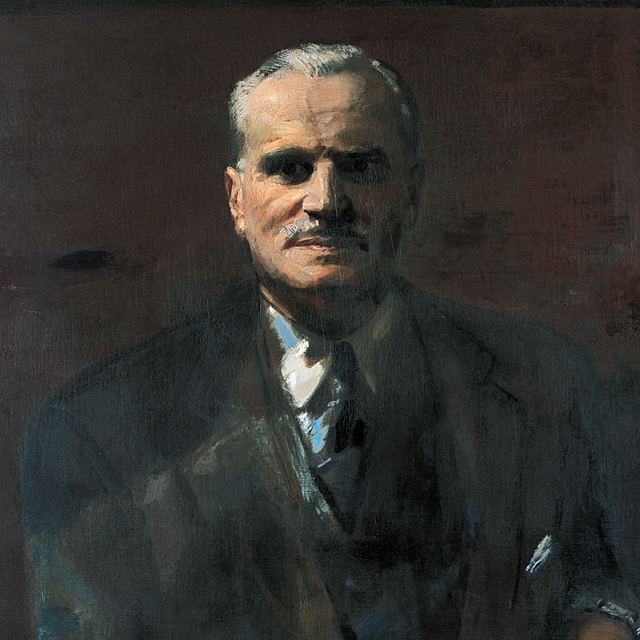Nobel Laureate Arthur Holly Compton was born in 1892 in Wooster, Ohio.
Like his older brothers (Karl and Wilson, who would serve as the presidents of MIT and Washington State College, respectively), he attended Wooster College where his father, a Presbyterian minister, was a professor.
After earning his bachelor’s degree he went on to Princeton, where he earned both his master’s and doctoral degrees. He began his academic career at the University of Minnesota in 1916, where he taught for one year before becoming a research engineer at the Westinghouse Lamp Company in Pennsylvania. As a civilian, in 1917 he also helped develop airplane instruments for the U.S. Signal Corps.
The goal before us is education for a greater destiny. Our nation is setting a pattern for the world. Here at our nation’s heart the pattern selected by Washington University can thus shape the growth of man. With the cordial support of the Corporation and friends of the university, the loyal cooperation of the faculty, and the earnest effort of the students, this university will take an ever greater part in building our community and our world.
Arthur Holly Compton, “Education for a Greater Destiny,” inaugural address, February 22, 1946
Armed with a National Research Fellowship in physics, he studied at the Cavendish Laboratory at Cambridge University in 1919–20, where he witnessed early attempts at splitting the atom. Upon his return to the U.S. he became professor of physics and head of the physics department at Washington University. He stayed for only three years before accepting a position at the University of Chicago, where he stayed for the next 22 years.
During his time at Washington University, he discovered an “x-ray scattering effect” that came to be known as the “Compton effect,” for which he was awarded the Nobel Prize in Physics in 1927. He was also involved in cosmic ray research and from 1931 to 1933 directed a world cosmic ray survey.
From 1942 to 1945 he directed the Metallurgical Laboratory of the Manhattan Project at the University of Chicago. His book Atomic Quest not only tells the story of the Manhattan Project and the creation of the atom bomb, but also presents many of his views on the relationship between science and religion, a subject of lifelong concern for him.
At the end of the war, Compton came back to St. Louis to take up duties as chancellor at Washington University. During his chancellorship the university experienced tremendous growth in enrollment, fueled by World War II veterans taking advantage of the GI Bill. He reestablished football in 1946 after a four-year hiatus but made the brave and wise decision of declaring that athletics were to be played on a “strictly amateur” basis with no athletic scholarships.
Full racial desegregation for the campus, slow in coming despite years of pressure from students, faculty and members of the St. Louis community, finally became reality in 1952 near the end of his tenure as chancellor. Just prior to his resignation in 1953, the university celebrated its centennial and established a Centennial Fund to help shore up financial resources depleted by the dropping enrollments of the 1950s, caused in part by the Korean conflict.
He held the title of Distinguished Service Professor of Natural Philosophy from 1945 until his death in 1962.
Notable dates
1946: Arthur Holly Compton was inaugurated as the ninth chancellor on February 22. He established athletics on a “strictly amateur” basis with no athletic scholarships.
1947: A record number of students, 13,204, enrolled in the fall as returning World War II veterans entered colleges nationwide.
1947: Carl and Gerty Cori were awarded the Nobel Prize for Physiology or Medicine, becoming the university’s fifth and sixth Nobel laureates.
1950: A. Gwendolyn Drew, hired as associate professor of physical education in 1946, became the first woman named a full professor on the Hilltop Campus.
1952: The College of Liberal Arts became the last academic unit to desegregate, permitting the admission of African-Americans.
1953: On April 10, Chancellor Compton tendered his letter of resignation to the board; Board President Ethan A.H. Shepley was named acting chancellor.
